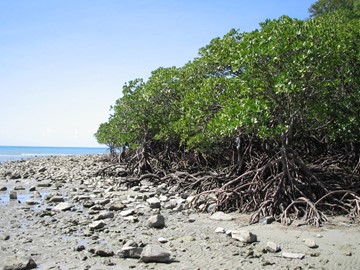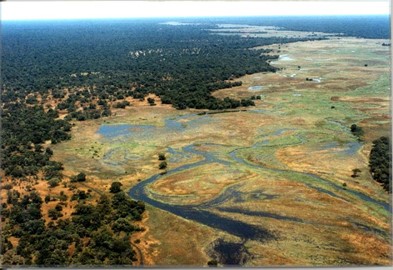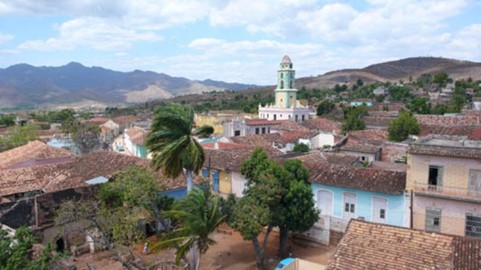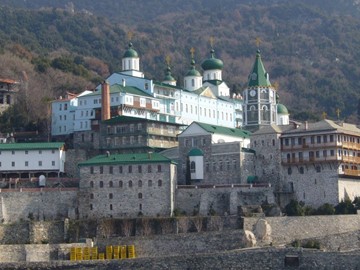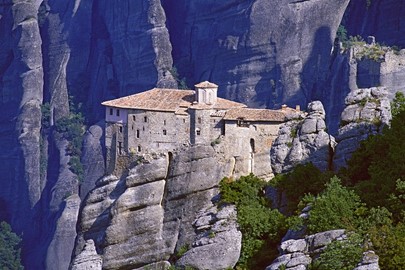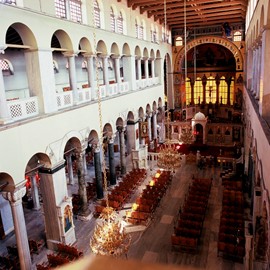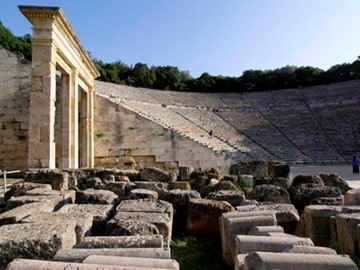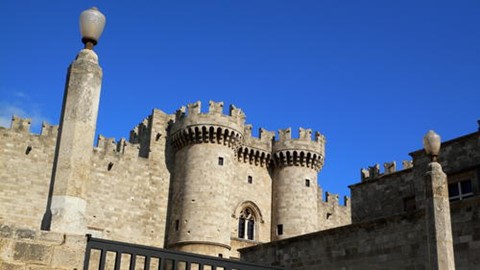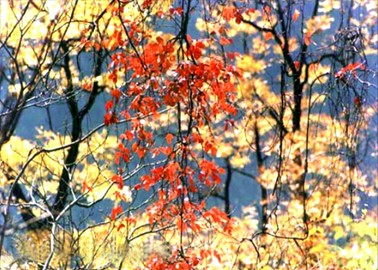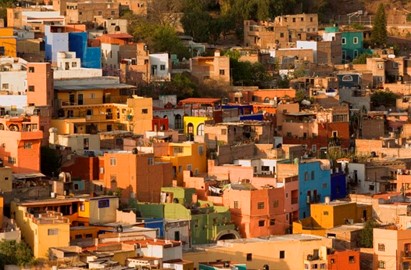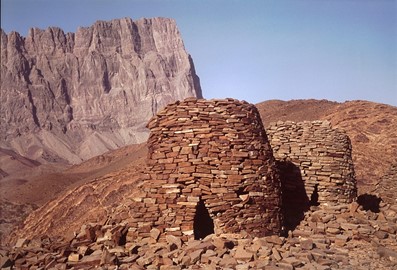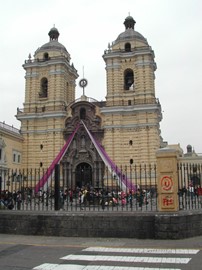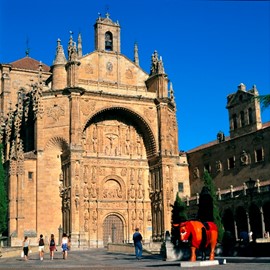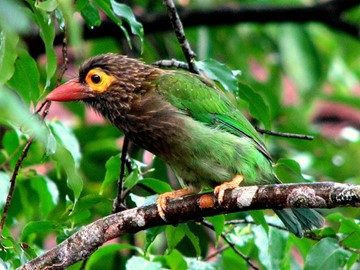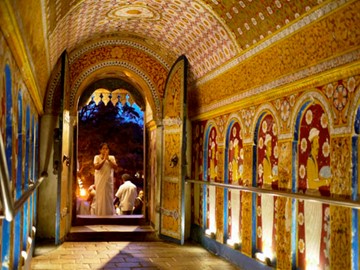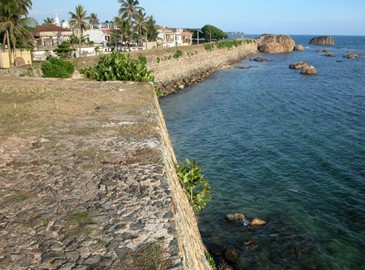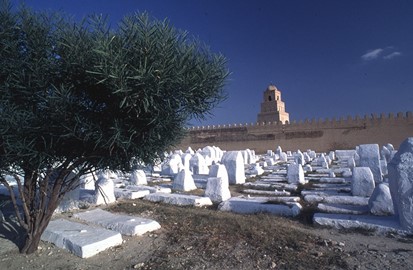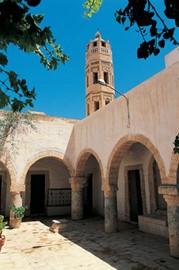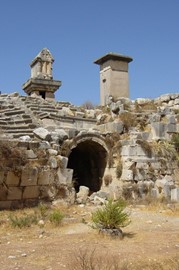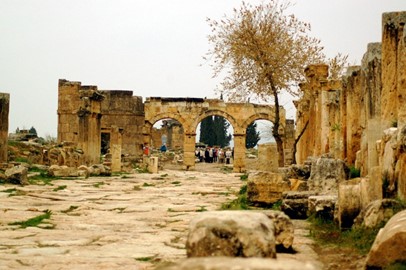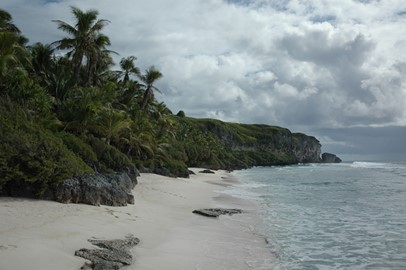year :: 1988
Wet Tropics of Queensland
The Wet Tropics of Queensland, a UNESCO World Heritage site in Australia, is a lush tropical rainforest renowned for its extraordinary biodiversity and ancient origins. Teeming with unique species like the cassowary and vibrant tree frogs, it preserves some of the oldest rainforests on Earth, dating back over 100 million years. Dense canopies, cascading waterfalls, and rugged gorges create a stunning landscape, while its ecological diversity offers a living record of evolutionary processes. This pristine wi... Read More
Manovo Gounda St Floris
Manovo-Gounda St Floris, a UNESCO World Heritage site in the Central African Republic, is a vast savanna park renowned for its rich biodiversity and ecological significance. Home to iconic species like black rhinoceroses, elephants, leopards, and red-fronted gazelles, it straddles two ecological zones, blending East and West African savanna species with southern forest communities. Inscribed in 1988 for its natural wealth, it has been on the List of World Heritage in Danger since 1997 due to poaching and se... Read More
Trinidad and the Valley de los Ingenios
Trinidad and the Valley de los Ingenios, a UNESCO World Heritage site in Cuba, is a well-preserved colonial city and surrounding sugar-producing valley that showcase the island's historical and cultural legacy. Founded in the early 16th century, Trinidad features cobblestone streets, pastel-colored buildings, and Spanish colonial architecture, reflecting its prosperity from the sugar trade. The nearby Valley de los Ingenios, with its ancient sugar mills, plantations, and archaeological remains, highlights t... Read More
Strasbourg
Strasbourg, a UNESCO World Heritage site in France, is a historic city renowned for its picturesque medieval core. Its iconic Gothic cathedral, with its intricate facade, towers over half-timbered houses along charming canals. The site reflects a unique blend of French and German influences due to its border location. Known for its role in European history, it preserves a rich cultural tapestry. This well-preserved urban gem offers a captivating glimpse into centuries of architectural and political heritage... Read More
Mount Athos
Mount Athos, a UNESCO World Heritage site in Greece, is a self-governing monastic community renowned for its spiritual and cultural significance. Home to 20 Eastern Orthodox monasteries, it has been a center of religious devotion and scholarship since the 10th century. The peninsula’s rugged terrain and isolation have preserved its Byzantine architecture, ancient manuscripts, and traditional way of life. Access is restricted, with only male pilgrims permitted after obtaining special approval, reflecting its... Read More
Meteora
Meteora, a UNESCO World Heritage site in Greece, is renowned for its unique geological formations and monasteries built atop towering rock pillars. Formed millions of years ago, these natural wonders create a dramatic landscape that blends seamlessly with the historic monastic complexes. Established primarily in the 14th century, the monasteries were constructed by monks seeking solitude and spiritual refuge, showcasing remarkable architecture and frescoes. Today, six of these monasteries remain active, att... Read More
Thessalonika
Thessaloniki, a UNESCO World Heritage site in Greece, is a historic city renowned for its rich cultural tapestry, blending Roman, Byzantine, and Ottoman influences. Founded in 315 BC, it boasts well-preserved landmarks like the White Tower, the Arch of Galerius, and numerous early Christian and Byzantine monuments, recognized for their architectural and artistic significance. As a key port on the Aegean Sea, it has long been a crossroads of trade and ideas, contributing to its vibrant heritage. Today, it st... Read More
Sanctuary of Asklepios
The Sanctuary of Asklepios, a UNESCO World Heritage site in Greece, is an ancient healing center dedicated to the god of medicine, Asklepios. Established in the 6th century BCE, it served as a renowned medical and religious complex where patients sought cures through rituals, dreams, and treatments. The site features impressive ruins, including a theater, temple, and therapeutic baths, reflecting its historical significance. Excavations have revealed artifacts that highlight its role as a pioneering hub of ... Read More
Rhodes
The Medieval City of Rhodes, a UNESCO World Heritage site, is a well-preserved historical gem in Greece, renowned for its impressive fortifications, cobblestone streets, and Gothic architecture. Built by the Knights of St. John in the 14th century, it reflects a blend of medieval European and local influences. The city’s massive walls, grand palaces, and ancient gates offer a glimpse into its storied past as a strategic stronghold. Today, it stands as a living museum, attracting visitors with its timeless c... Read More
Nanda Devi and Valley of Flowers
Nanda Devi and Valley of Flowers, a UNESCO World Heritage site in India, is renowned for its stunning natural beauty and biodiversity. This protected area features the majestic Nanda Devi peak, one of India's highest mountains, surrounded by pristine alpine meadows, glaciers, and rare flora like the blue poppy. The Valley of Flowers is celebrated for its vibrant wildflower blooms, especially during the monsoon season, alongside a rich ecosystem supporting endangered species such as the snow leopard and Hima... Read More
Djenné
The Old Towns of Djenné, a UNESCO World Heritage site, are historic settlements in Mali renowned for their unique mud-brick architecture, including the iconic Great Mosque. Established as a trading hub along the trans-Saharan routes, these towns reflect centuries of cultural and commercial exchange. The well-preserved urban layout and traditional building techniques highlight their historical significance and architectural ingenuity. Today, they stand as a testament to Mali's rich heritage and early urban d... Read More
Timbuktu
Timbuktu, a UNESCO World Heritage site in Mali, is a historic city renowned for its role as a medieval center of trade, culture, and Islamic scholarship. Founded around the 11th century, it flourished due to its strategic location on trans-Saharan trade routes, becoming a hub for salt, gold, and knowledge exchange. The city is home to iconic mud-brick architecture, including the Sankore Mosque and University, which highlight its intellectual legacy. Despite facing threats from conflict and desertification, ... Read More
Guanajuato
Guanajuato, a UNESCO World Heritage site in Mexico, is renowned for its rich colonial history, vibrant culture, and stunning architecture. This picturesque city features colorful buildings, winding cobblestone streets, and historic silver mines that once fueled its prosperity. Notable landmarks include the iconic Basilica of Our Lady of Guanajuato and the eerie yet fascinating Mummy Museum. Its unique underground street system and lively festivals, like the Cervantino International Festival, further enhance... Read More
Chichen Itza
Chichen-Itza, a UNESCO World Heritage site, is an ancient Mayan city renowned for its impressive architecture and historical significance. The site features the iconic El Castillo pyramid, a testament to Mayan astronomical knowledge with its 365 steps representing the days of the year. Other notable structures include the Great Ball Court and the Temple of the Warriors, reflecting the city's cultural and political importance during its peak between the 7th and 13th centuries. Today, it stands as a well-pres... Read More
Bat, Al Khutm and Al Ayn
Bat, Al-Khutm, and Al-Ayn form a UNESCO World Heritage site showcasing one of the most complete and well-preserved collections of 3rd-millennium BCE settlements and necropolises globally. The site features over 100 beehive-shaped tombs, monumental stone towers, and remnants of rural settlements and irrigation systems from the Bronze Age. Recognized in 1988, it highlights ancient trade networks and funerary practices, offering a unique glimpse into early human civilization.
Lima
The Historic Centre of Lima, a UNESCO World Heritage site in Peru, showcases a remarkable blend of colonial architecture and urban planning from the 16th century. Founded by Spanish conquistador Francisco Pizarro, it served as the political and administrative heart of Spain’s South American empire, featuring landmarks like the grand Plaza Mayor, the ornate Archbishop’s Palace, and the Basilica Cathedral. The site preserves a rich history of European influence, with its grid layout and baroque-style building... Read More
Salamanca
The Old City of Salamanca, a UNESCO World Heritage site in Spain, is renowned for its well-preserved historic architecture and cultural significance. This ancient university city boasts stunning examples of Romanesque, Gothic, Moorish, and Baroque styles, most notably in its grand Plaza Mayor and the intricate sandstone facades of its cathedral and university buildings. As one of Europe’s oldest academic centers, it has long been a hub of intellectual and artistic achievement, attracting scholars and visito... Read More
Sinharaja Forest
Sinharaja Forest, a UNESCO World Heritage site in Sri Lanka, is a biodiverse tropical rainforest renowned for its rich ecosystem. It serves as a habitat for numerous endemic species, including rare birds, mammals, and plants, making it a critical conservation area. The forest’s lush canopy and unique flora attract researchers and nature enthusiasts alike. Its global significance lies in its role as a living testament to the island’s ecological heritage.
Kandy
Kandy, a UNESCO World Heritage site in Sri Lanka, is a historic city renowned for its cultural and spiritual significance. It served as the last capital of the Sinhala kings, preserving a rich legacy of traditions and architecture. The city is home to the Temple of the Tooth Relic, one of Buddhism's most sacred shrines, housing a tooth of the Buddha. Kandy's vibrant festivals, notably the Esala Perahera, attract visitors with their elaborate processions and ancient rituals.
Galle
The Old Town of Galle, a UNESCO World Heritage site in Sri Lanka, is a well-preserved colonial fortress showcasing a blend of European and South Asian architectural influences. Built by the Portuguese in the 16th century and later expanded by the Dutch, it features sturdy ramparts, historic buildings, and charming streets that reflect its rich past as a key trading port. Today, it stands as a living testament to the island's colonial history, attracting visitors with its cultural significance and scenic coa... Read More
Kairouan
Kairouan, a UNESCO World Heritage site in Tunisia, is a historic city renowned for its rich Islamic heritage. Founded in 670 AD, it served as a key center for religious scholarship and trade in North Africa. The Great Mosque of Kairouan, one of the oldest and most prestigious mosques in the Muslim world, stands as a testament to its architectural and cultural significance. Its well-preserved medina, with narrow streets and traditional markets, further highlights its historical importance.
Medina of Sousse
The Medina of Sousse, a UNESCO World Heritage site in Tunisia, is a well-preserved example of an early Islamic fortified city, established during the Aghlabid period (800–909) as a key commercial and military port. Its historic core features a robust kasbah, imposing ramparts, the Great Mosque, and the Ribat—a unique blend of fort and religious structure—reflecting Arabo-Muslim urbanism and coastal defense architecture. The medina’s narrow streets, traditional souks, and Archaeological Museum with its stunn... Read More
Xanthos Letoon
Xanthos-Letoon, a UNESCO World Heritage site in Turkey, is a remarkable archaeological complex showcasing the ancient Lycian civilization's unique architecture and cultural heritage. Xanthos, the capital of Lycia, blends Lycian traditions with Hellenic influences, evident in its distinctive rock-cut tombs and pillar-mounted sarcophagi, while Letoon served as a significant religious sanctuary dedicated to the goddess Leto. The site is renowned for its well-preserved ruins, including a theater, temples, and i... Read More
Hierapolis Pamukkale
Hierapolis-Pamukkale, a UNESCO World Heritage site in Turkey, is renowned for its stunning natural and historical features. The site boasts gleaming white travertine terraces formed by calcium-rich thermal springs cascading down a hillside, creating a surreal, cotton-like landscape. Adjacent to this natural wonder lies the ancient Greco-Roman city of Hierapolis, founded in the 2nd century BCE, featuring well-preserved ruins such as a theater, necropolis, and the sacred Plutonium cave associated with the und... Read More
Henderson Island
Henderson Island, a UNESCO World Heritage Site under UK jurisdiction, is a remote, uninhabited coral atoll in the eastern South Pacific, renowned for its pristine ecology largely untouched by humans. Its isolation has fostered unique biodiversity, including ten endemic plant species and four endemic land birds, making it an exceptional natural laboratory for studying island evolution and natural selection. Despite its ecological significance, the island faces challenges from plastic pollution washing ashore... Read More
